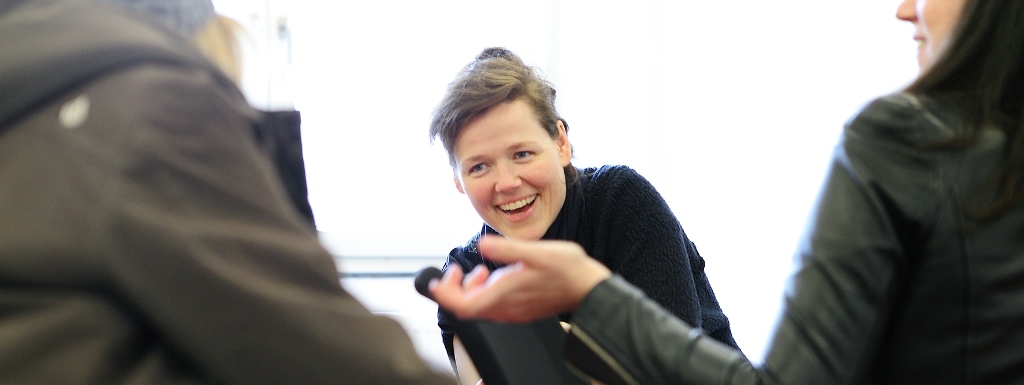Tables and Chairs to Live With
Thoughts on the physicality of education and scholarly work, and its workings in artistic research
The students re-used a normally individualized practice that is forbidden in school, namely rocking chairs, and introduced it into a collective setting. Bringing a group discussion literally out of balance, the students triggered reflections amongst the participants concerning mutual trust, body language, and questions of hierarchies in discussions held in school. Some of the teachers uttered their disbelief at the exercise and their discontent with allowing rocking chairs, while some students didn’t dare join in because they didn’t have enough trust in each other’s capability of holding each other. However, once the participants engaged in the exercise, it sparked exciting discussions that related to the questions of how we work together, forms of trust, unwritten rules, and the function of our bodies in these relationships. The exercise “Collectively Rocking Chairs” has gained quite some prominence both in school, entering different classroom situations, as well as other workshop settings outside school, such as in a project with the staff of an art organization or at university settings. The exercise has become the departure point for many discussions around hidden levels of complicity between spatial arrangements, bodies, and daily routines of behaving and thinking.
The students’ exercise prompted me as well to do further research into the spatial and bodily arrangement of group conversations and their socio-political implications. One of these arrangements is the so-called roundtable format, which has been one of my preferred discussion arrangements in meetings or workshop settings. In many workshops I was given critical feedback on these considerations, one of these being the workshop “Practices of (Un)learning” in Salzburg in which the participants examined their own classroom routines of learning in their university settings.

Mapping during the workshop “Practices of (Un)learning”. The participants examined their own classroom routines of learning in university settings. In the framework of the symposium “Artistic Interventions and Education as Critical Practice” University of Salzburg 4/5 April 2014).
Annette Krauss ( 2014): Tables and Chairs to Live With. Thoughts on the physicality of education and scholarly work, and its workings in artistic research. In: p/art/icipate – Kultur aktiv gestalten # 05 , https://www.p-art-icipate.net/tables-and-chairs-to-live-with/



 Artikel drucken
Artikel drucken